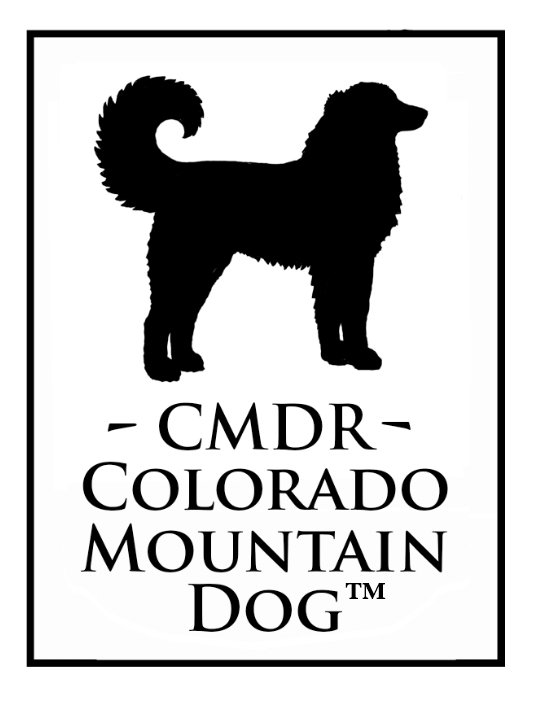~ Articles ~
Starting CMDs With Livestock
All dogs and all livestock are different. The idea is not to have your dogs hurt by your livestock, or your livestock hurt by your dogs.
I love the above photo because so much is happening. The center dog, SPE Albi, is a young visiting female who has never seen a goat. She is thinking something like, “Why does this dog smell funny and have two sticks on its head?” The dog to the left recognizes the other dog’s tense posture and is making a deliberate casual contact with the goat to ease the situation, and the dog on the right realizes that nobody is guarding, so she is on duty looking out at the forest.
CMDs will begin guarding behaviors in earnest 5 to 7 months. Be careful with the amount of responsibility you saddle them with at this age. They can take off after predators and be injured or killed. If you have big predators, get an appropriate number of dogs, minimum two.
I have different pens of livestock. I have a buck pen, a weanling doe pen, and a mature doe/kidding pen, and an empty pen. As dogs mature, I let them experience all these pens. Initially I introduce animals and LGDs across a shared fence line.
Baby dogs can go in with weanling does. Slightly bigger pups 4 to 6 months, can go in with my does and babies because the does will teach them respect for the babies but will not damage them. Adolescent males who are full of themselves can go in with the mature bucks. I raise Kikos, which have great temperaments, (and I select my Kikos for temperament, additionally). Your goat milage may vary, so be careful.
In general, during LGD adolescence, the size and weight of the dog determine what he can go in with. Anything bigger than the dog will train the dog. Anything smaller than the dog can be a target, until the dog matures past adolescence. So the death of livestock smaller than an immature LGD is 100% owner mismanagement.
Watch your dog’s eye contact and mentor according to where he is looking long before a bad behavior begins. In this way, your dog will be trained not to THINK about inappropriate behavior, rather than being trained to wait until you are not around. Eye contact is everything. LGDs are bred not to lock a stare, and this can be easily mentored out if they do. Be careful not to lock a stare on your livestock while training your dogs. Be careful not to assume a predatory body stance when handling livestock around young LGDs. Don’t let them stare at livestock. Clap hands, toss something lightweight, walk between the dog and the animal, or find another abrupt way to jolt a dog out of a predatory thought sequence. That is how training really occurs.
Young dogs need a pack. They will treat their livestock like their pack, and injure them in play, if they don’t have canine companionship. So the deaths of livestock due to a young CMD having nobody to play with 24/7, are owner mismanagement.
I am careful not to leave dog/livestock combos unsupervised, where somebody could get hurt.
My most mature dogs are the best ones to have in the doe/kidding pens because they will take care of the does without disturbing them too much. They will clean the does, kids, and not stress them. Younger more energetic dogs are not left in with late pregnancies... those gals need to be chill.
Female Colorado Mountain Dogs may become too protective during late stages of pregnancy to be left in with anything. Sometimes, depending on the dog, they want a private place a few weeks before the litter comes. They may be too rough on livestock at this time.
I check the hocks of young goats often as I am raising CMDs. If I see a goat with wet hocks, I know one of my dogs is playing with the livestock. I will then watch out for who, and either remove them to a different pen, or mentor them accordingly.
Often young dogs just need to be told what is expected, "Hey, no no". Sometimes they just need time to mature and I can't leave them in there. If a goat has wet hocks, she is being bothered, and often dogs will choose the same goat and wear it down. So you need to intervene.
With poultry, get the baby pups in there as soon as possible, and pull them out when they get too big, and playful. In this way, they will become familiar with poultry so they can be put back at a later date. CMDs often get good with poultry between 1 and 2 years of age. This is also a matter of genetic aptitude. Make sure pups won't get hurt by big roos. Lots of people lose a chicken or two in the process. This doesn’t mean you have a bad dog. I often have dogs I can trust 24/7 with poultry starting at 6 months.
If you need poultry guarded but your dog is too young, you can fence off your birds inside your larger dog pen.
All these things are so general and there are a million nuances, but I hope this helps. Nothing at my little place is too static, lol. Once your pack is up and running, older dogs will mentor younger ones, and things get easier.

